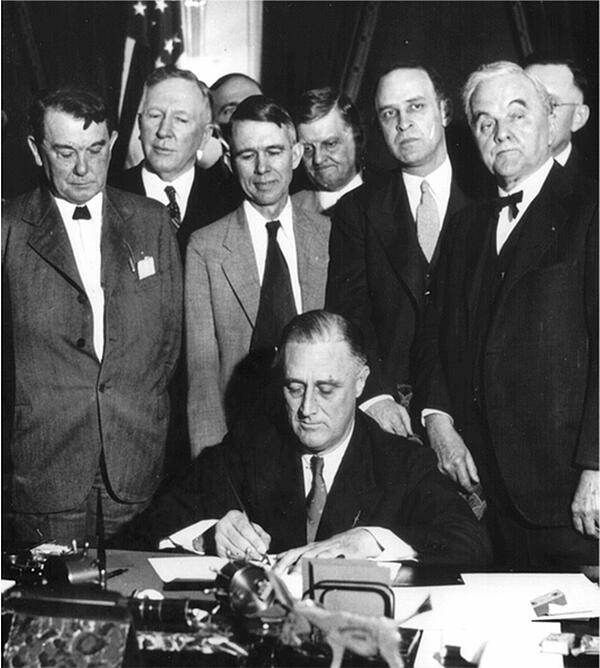Was the New Deal a Success?
To answer the question, ‘was the New Deal a success?’ we first have to define ‘success’. For Franklin D Roosevelt (FDR) in 1933, success meant working towards relief and recovery.
However, over time the idea of success evolved. By 1936 many hoped that the New Deal could provide solutions to a huge range of social, political and economic problems. With such high expectations, the New Deal was destined to be the subject of both praise and criticism.
FDR’s First Hundred Days were a success in many ways. As Roosevelt said in 1933: “All we have to fear is fear itself.”
Through his ‘fireside chats’ he managed to restore confidence in the banks - a vital element of recovery. Roosevelt took on the role of commander in chief during wartime by working quickly and confidently. On his first night in office he directed Treasurer William Woodin to draft an emergency banking bill. He then halted transactions in gold and proclaimed a national bank holiday. This fast and assertive action was welcomed by the public and proved Roosevelt’s success as a leader.
The New Deal was also effective in offering relief to the poor. Relief schemes, such as the CWA and WPA, provided jobs and support for millions of Americans.
However, the New Deal was less successful in terms of recovery. The figures below show the slow America’s slow recovery.

America's Gross National Product 1928 to 1939:
| 1928 | $100 billion |
|---|---|
| 1933 | $55 billion |
| 1939 | $85 billion |
Amount of consumer goods brought 1928 to 1939:
| 1928 | $80 billion |
|---|---|
| 1933 | $45 billion |
| 1939 | $65 billion |
Private investment in industry:
| 1928 | $15 billion |
|---|---|
| 1933 | $2 billion |
| 1939 | $10 billion |
These figures show that FDR was not able to return the American economy to 1929 levels. However, considering the brevity of the depression this would have been virtually impossible anyway. Moreover, the figures do show a marked improvement in the economy in 1939, compared to 1933.
The New Deal is often criticised for not actually ending the Great Depression. Recovery was painfully slow and throughout the decade unemployment remained high.
Number Unemployed in America:
| 1929 | 2.6 million |
|---|---|
| 1933 | 15 million |
| 1935 | 11 million |
| 1937 | 8.3 million |
| 1938 | 10.5 million |
| 1939 | 9.2 million |
| 1940 | 8 million |
Those who criticise the New Deal claim that it never laid the foundations to end unemployment. Although “Alphabet” Agencies, such as the Civilian Corps, put many Americans to work, they did not offer a long-term solution. In 1938 unemployment increased again to over 10 million. It only began to fall steeply again in 1939 when the US began to build up its armaments in case of war.
Economists who attacked the New Deal claimed that all the acts introduced by the New Deal were short-term policies and that there was no long term planning for America's future.
But despite its economic weaknesses, the New Deal successfully restored the confidence of the American people. Through the New Deal, Roosevelt changed the role of government forever.
See also: USA 1919
MLA Citation/Reference
"Was the New Deal a Success?". HistoryLearning.com. 2025. Web.
